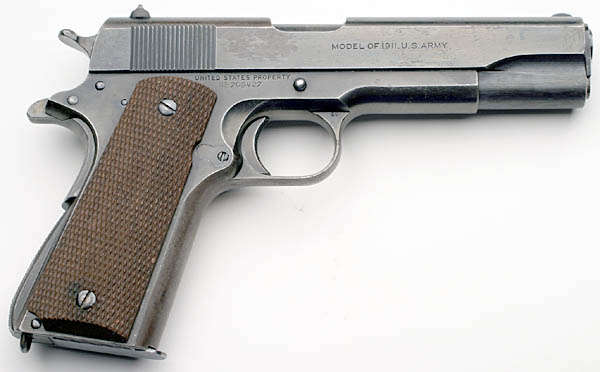 Colt Model 1911A1
Transition Model - Serial number 709427. On June 12, 1923, Colt's was
awarded the contract to manufacture 10,000 "Improved Automatic Pistols" to
include the modifications that were approved on April 20, 1923. These
pistols were numbered from serial number 700001 to 710000. In this
range, 709001 to 710000 were reserved for National Match use.
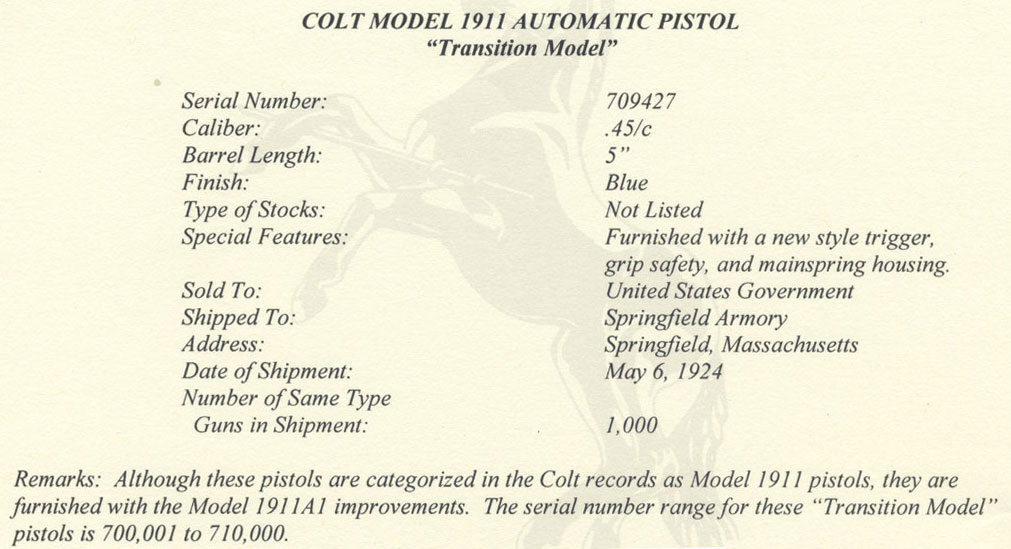 Colt Model 1911A1
.45 ACP Transition Model Factory Letter - Serial number 709427 was
shipped May 6, 1924 as part of a 1000 gun shipment to the Commanding Officer
at Springfield Armory.
Alan J. Van den Berg
Alexandria Gazette Obituary - June 2000
As a Fairfax County,
Virginia resident and community leader for over 50 years, Alan J. Van den
Berg was a remarkable man: a scholar, nuclear engineer, septuagenarian,
emergency medical technician, Red Cross volunteer, father and friend.
He loved to learn and apply his knowledge. “He was always looking for
creative solutions to problems,” recalls his son, Joe. “He loved
challengers.” To the nuclear engineers at Fort Belvoir, he was the one who
ran the test nuclear power plant or was sent to fix nuclear problems in
Greenland. To the teenagers that flooded his Mt. Vernon home in the 1950s
and 1960s, he was a good pizza cook and willing listener, who relished the
activity in the home he shared with his wife, Jean.
To the doctors who credited him with twice saving his own life he was a
medical diagnostician. To the EMT squad he joined in his 70s he was a man of
enormous vitality with an amazing medical knowledge. To the Red Cross
patients he ferried around or helped after a 3AM fire when he was in his
80s, he was a saint. To his wife, family and friends, he was Van.
Van was born June 1, 1910 in the Gramercy Park area of New York City, where
he graduated at 15 from DeWitt Clinton High School. After studying at Brown
University, he transferred to the University of Virginia, where he was a
varsity swimmer and in 1931 received his undergraduate degree in chemistry.
He then enrolled in medical school at Columbia University, withdrawing two
years later after his father’s death to pursue a career in engineering.
He received his degree in electrical engineering at New York University,
where he also took courses in business administration. He later studied
nuclear science and nuclear engineering at Pennsylvania State University. He
studied at the Massachusetts Institutes of Technology, where he also taught
classes.
Van served in the Army during World War II, attaining the rank of major, and
subsequently worked as a civilian licensed engineer for the Army Corps of
Engineers until 1980, the last seven following the partial removal of his
larynx because of cancer. From his medical school experience, he detected a
flow in the suturing following surgery and communicated this to the surgeon,
a correction that probably saved his life, according to his son. Although he
learned to talk again, he was forced to give up his hobby as a barbershop
quartet singer and his active role in the Fort Belvoir Toastmasters Club,
where he served as an officer.
He wrote extensively about aspects of nuclear technology in professional
journals and operated a test model 10-megawatt nuclear power plant at Fort
Belvoir. There he worked on a process for using nuclear waster to purify
water, but it was never developed commercially after discontinuation of the
reprocessing of nuclear waste in the 1970s.
After retiring at age 70 from the Corps of Engineers, Van studied at
Northern Virginia Community College and received his certificate as a
certified emergency medical technician (EMT). He worked 10 years as a
volunteer for the Dumfries-Triangle Rescue Squad, retiring when he was 80.
He remained active as a Red Cross volunteer and in numerous activities in
the Episcopal Church.
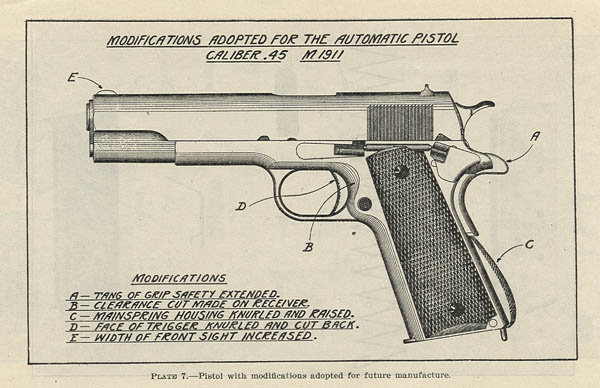
MODIFICATIONS ADOPTED FOR THE AUTOMATIC PISTOL, CALIBER .45 M1911
MODIFICATIONS
A - Tang of Grip Safety Extended.
B - Clearance Cut Made on Receiver.
C - Mainspring Housing Knurled and Raised.
D - Face of Trigger Knurled and Cut Back.
E - Width of Front Sight Increased. Image from ORDNANCE DEPARTMENT.
AUTOMATIC PISTOL, CALIBER .45, MODEL OF 1911.
Training Regulations 320-15. (1-2), War Department, Washington, March 3,
1924.
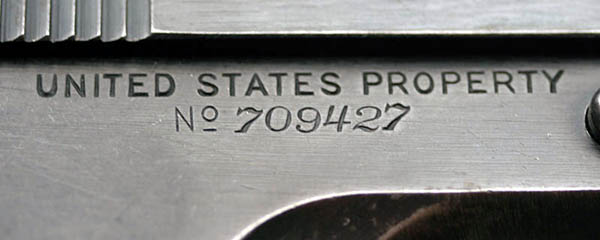
Close-up of serial number and United
States Property mark on the right side of the frame. 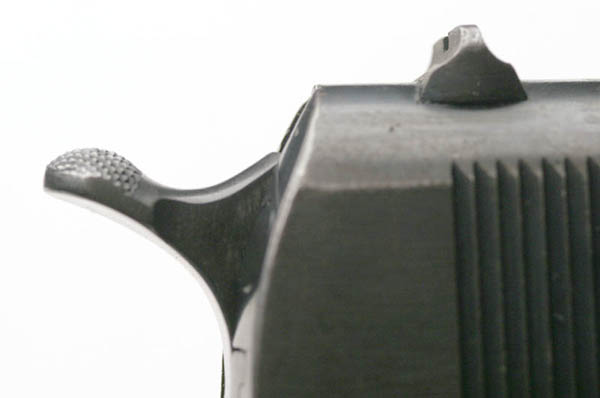
Hammer profile. 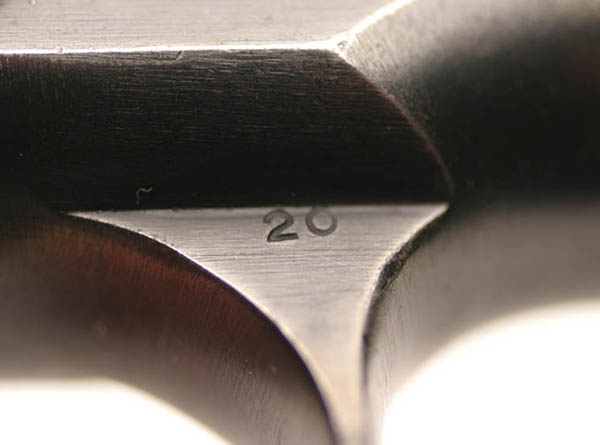
Colt assembler's mark on upper right flat of the trigger
guard.
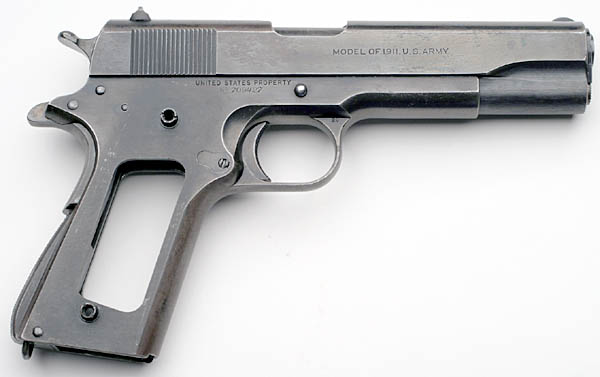
Right profile minus grips. Note "MODEL OF 1911 U.S.
ARMY" marking on the right side of the slide.
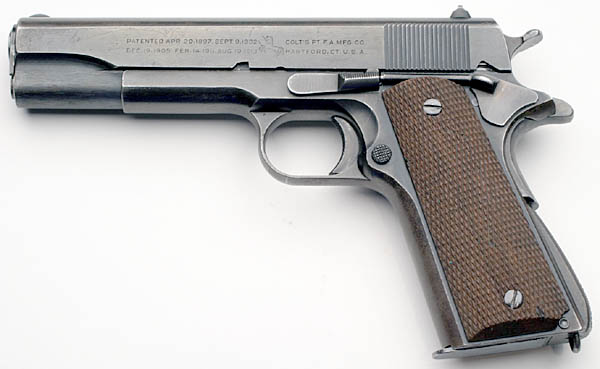
Left profile of serial number
709427 with fully checkered walnut grips (28 rows +/- 1 between screw
holes)
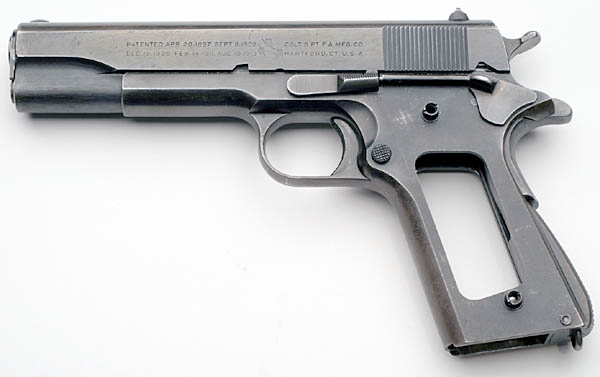
Left profile minus grips.
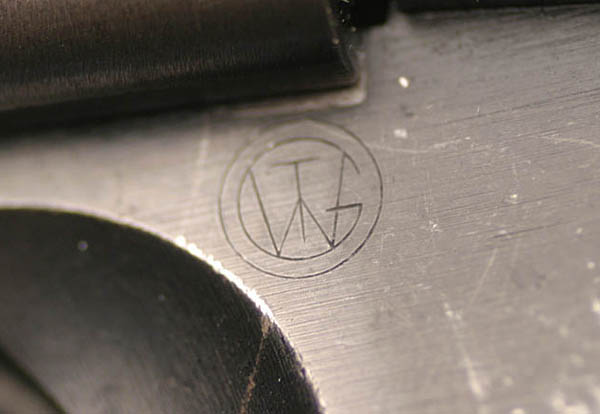
WTG inspector's mark enclosed
within a double circle are the initials of Captain Walter T. Gorton,
Inspector of Ordnance from December 5, 1921 to March 3, 1926. H
and G on top of frame, 20 on right trigger guard, H above firing pin stop
plate, G inside slide. Only 10,000 pistols were made in 1924. 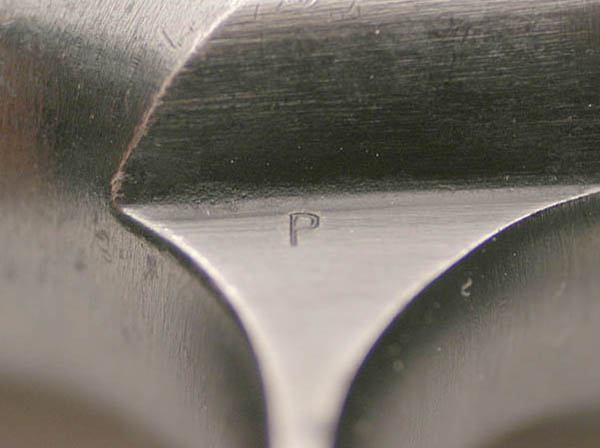
Small "P" on upper left flat of the trigger guard.
This mark is also present on 1937, 1938 and 1939 contract pistols. 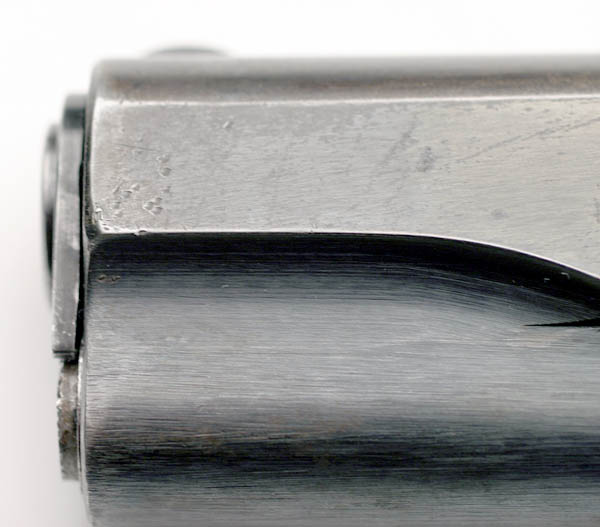
Front of slide, profile of barrel bushing. 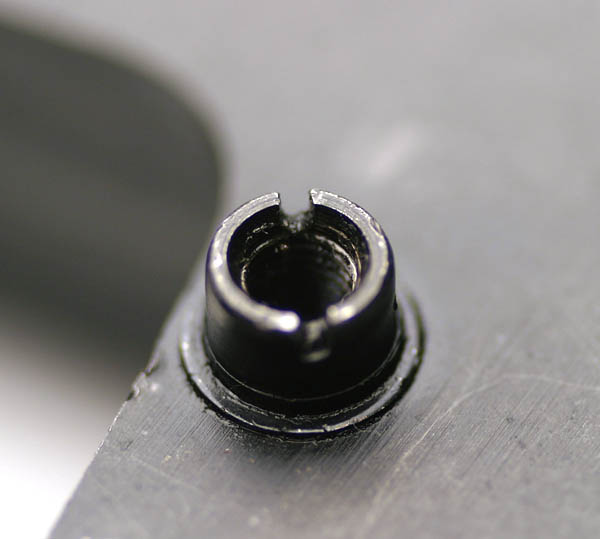
Grip screw bushing. 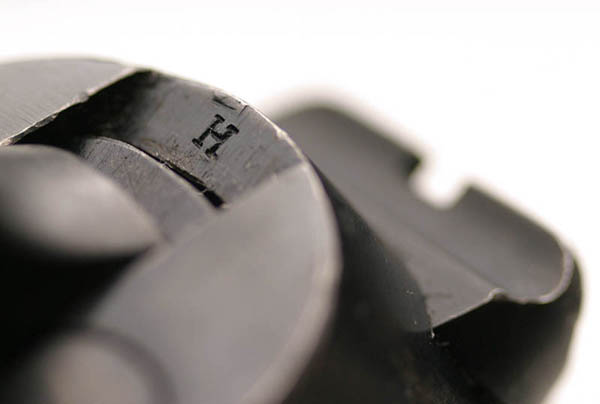
"H" on rear of slide above firing pin stop (with serifs). 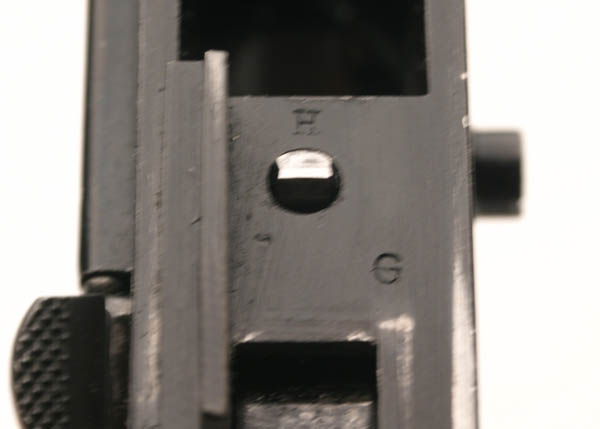
"H" 12 o'clock position from disconnector hole (with
serifs). "G" at 5 o'clock position from disconnector hole. 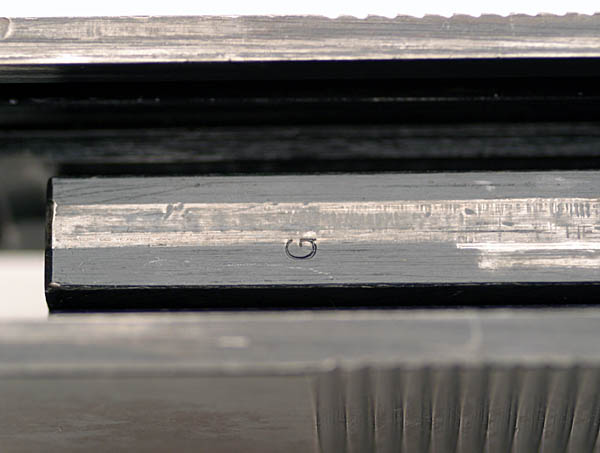
"G" mark on bottom of slide. 
Disconnector recess in the slide.
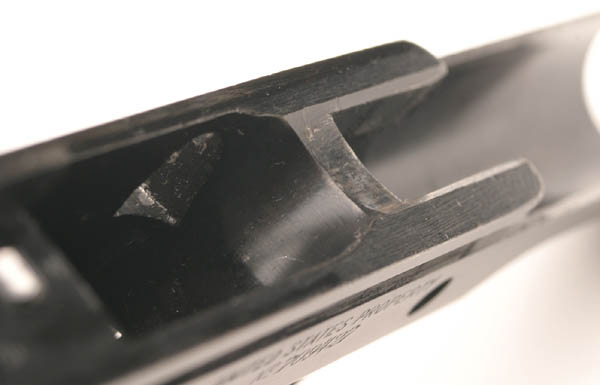
Feed ramp.
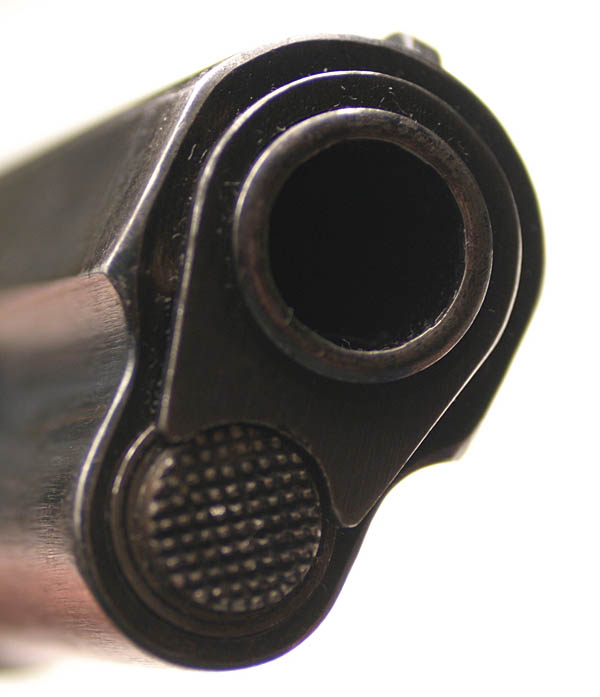 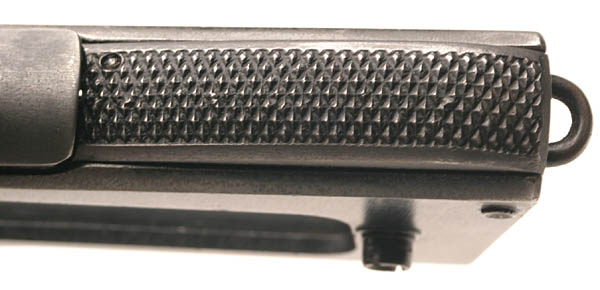
New style arched mainspring housing - knurled and raised.
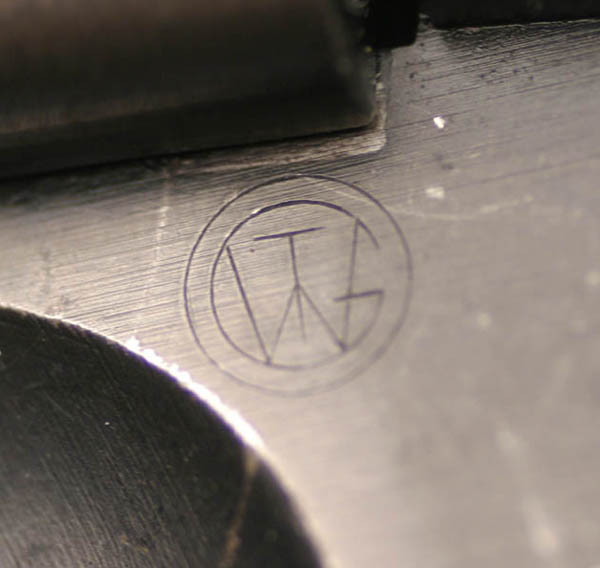
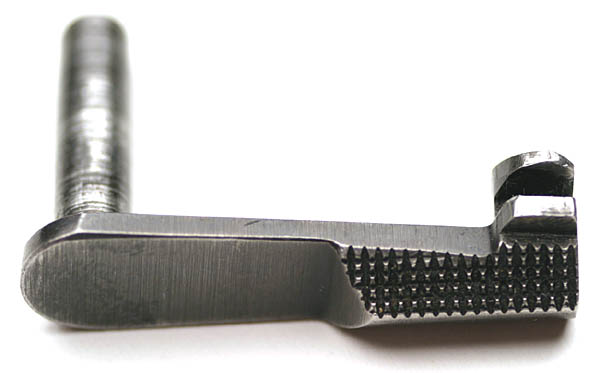
Model 1924 slide stop.
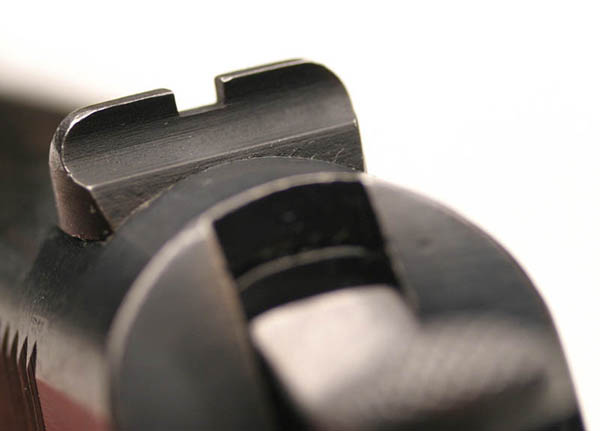
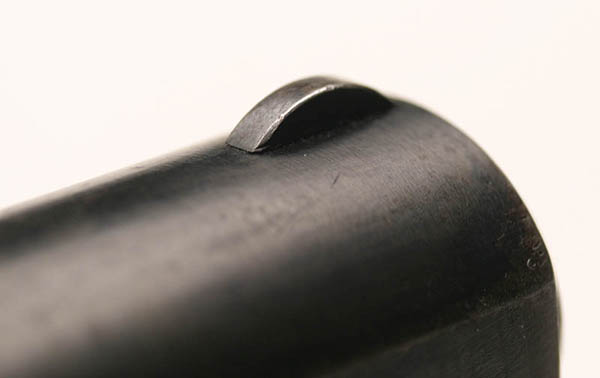
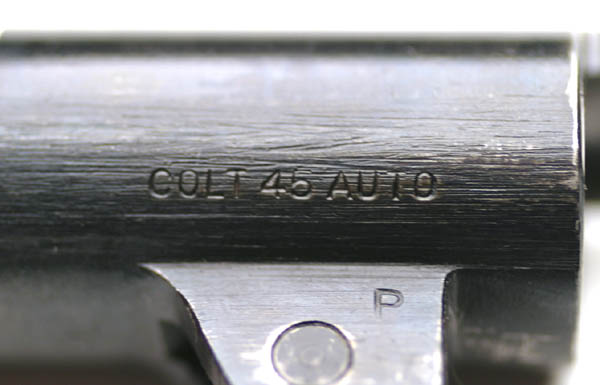
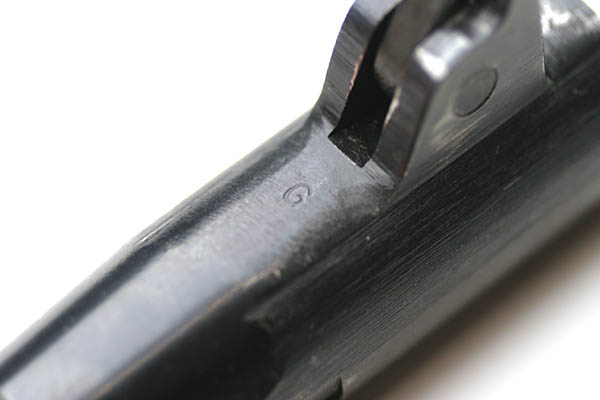 Colt small "G" barrel. |